We’re on our way to visit the ruins of Olympia, where the Olympic Games began.
Many visitors arriving on cruise ships never venture further than the port city of Katakolon, satisfied with browsing its trinket, t-shirt, and jewelry shops. Vassilios, our guide for the day, doesn’t disguise his disdain for these stores. “They aren’t owned or staffed by locals,” he explains, “and no local would ever shop here.”
Beyond the shops, long stretches of the highway just outside Katakolon are lined with garbage. Some are waist-deep and a hundred feet wide.
I didn’t think to snap a garbage pic.
This photo is from www.greek-islands-travel.co.uk. The owner retains all rights.
“It’s the fault of the European Union and the mayor,” Vassilios explains. “The EU insists Katakolon should pay to have our garbage shipped to landfills. The mayor insists the the city can’t afford to do it. So, it just piles up.”
We’re relieved, then, arrive in the pristine, eucalyptus-scented city of Olympia. It looks exactly as a city in Greece ought to: distant snow-capped mountains, undulating green hills, tall evergreens, and trailing blossoms:
Had we visited about two thousand years earlier, Olympia would have been even more breath-taking, with its crescent of stadiums, racing tracks, and gyms arranged around temples to Zeus and Hera. Athletes ran and wrestled. Crowds cheered. Vendors hawked the best street food the first century had to offer.
But when third-century earthquakes leveled the complex, the glory days of Olympia ended, and the shattered city lay abandoned.
Almost two thousand years later, German archeologists excavated (and some would say looted) the site. Their diaries tell stories about finding exquisite marble statues buried face down in the dirt. But the greatest of these — mighty Zeus, fifty feet tall and seated on a golden throne — evaded the Germans, and his whereabouts remain a mystery to this day.
The restoration of Olympia continues. Thought only partially restored, it’s easy to imagine Olympia in all its former glory — especially on a day like today, when the entire park is bursting with pink-blossomed Judas trees:
In some places, unearthed columns await reassembly:
In others, restoration makes it possible to see the bones of buildings that haven’t existed for more than 1800 years:
As we leave the park, it occurs to me that, despite the crowds, strolling through Olympia feels like walking through a graveyard.
I try to picture my own home — Midtown Atlanta, with its own marble temple (the Federal Reserve Bank), glass and steel towers, tree-lined avenues, and lively restaurants — in ruins.
In 4016, will tourists pose for photos top the Fed’s marble columns? Will they watch holographic re-enactments of our bustling neighborhood, based on recovered security camera footage? Will they stare at a little pile of orange bricks and try to imagine how the fourteen-story building I call home must have looked in 2016?
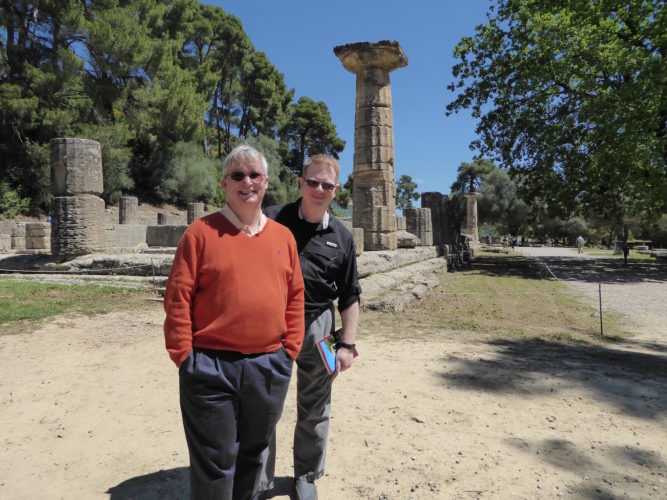

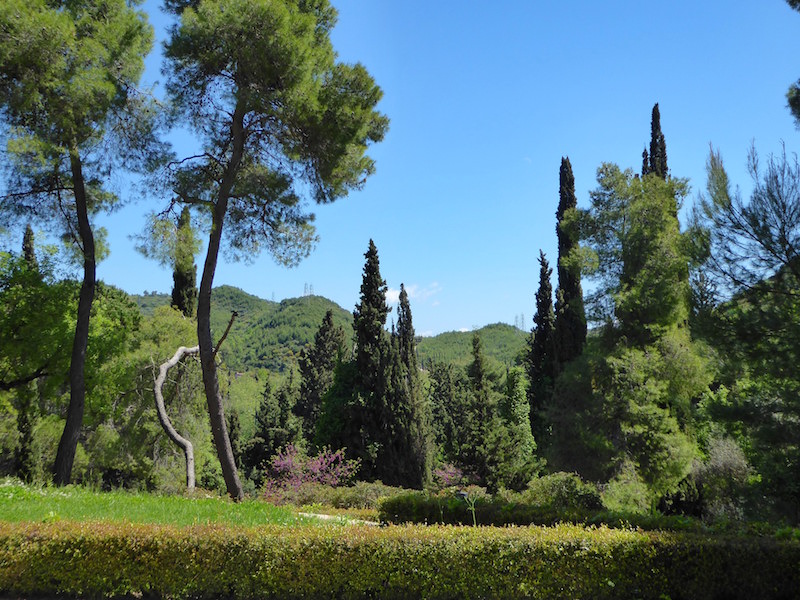
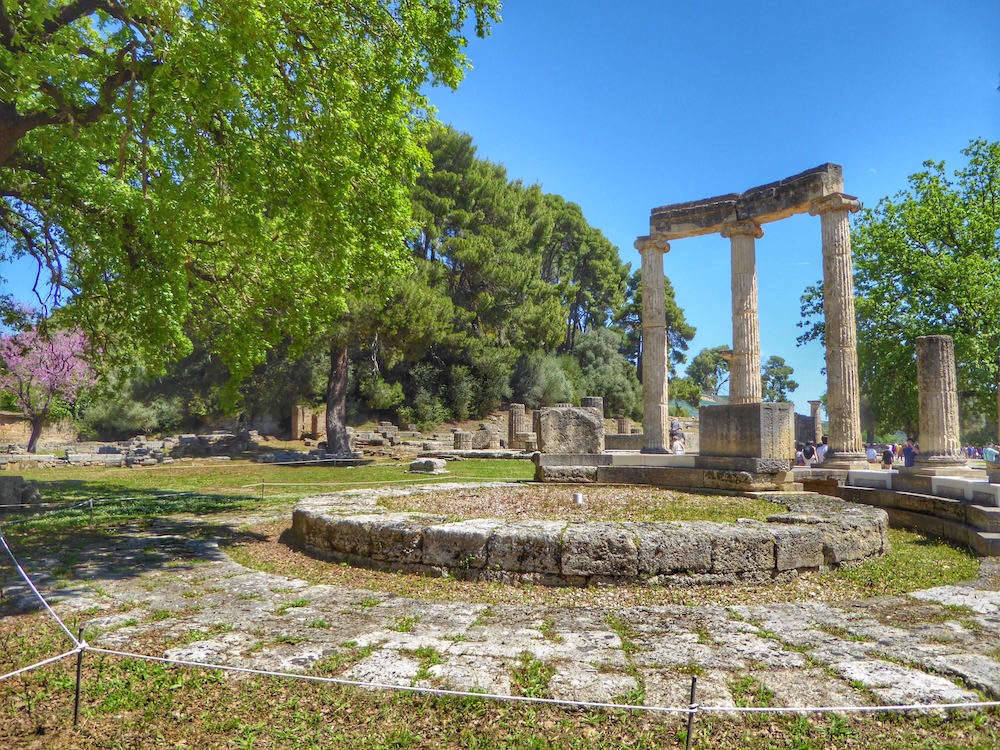
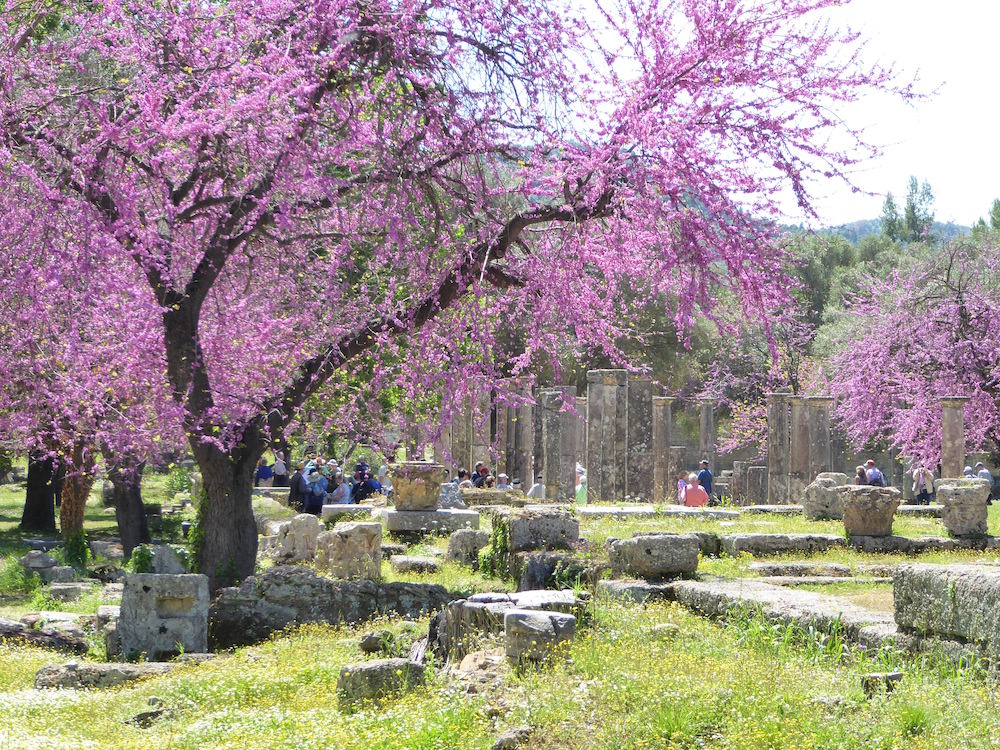
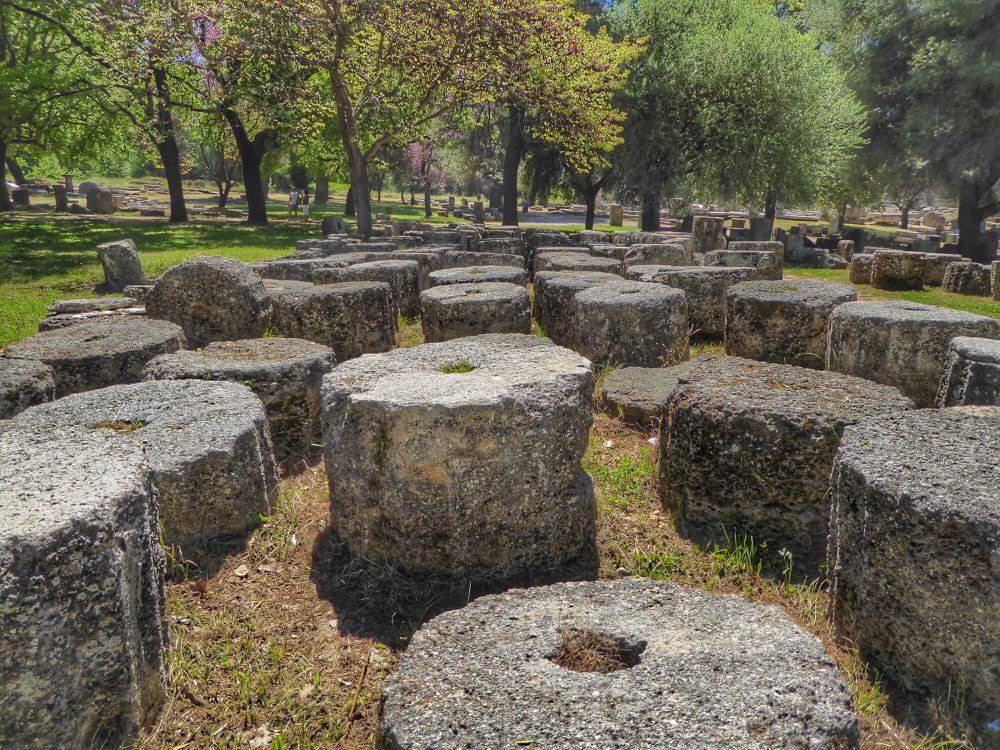
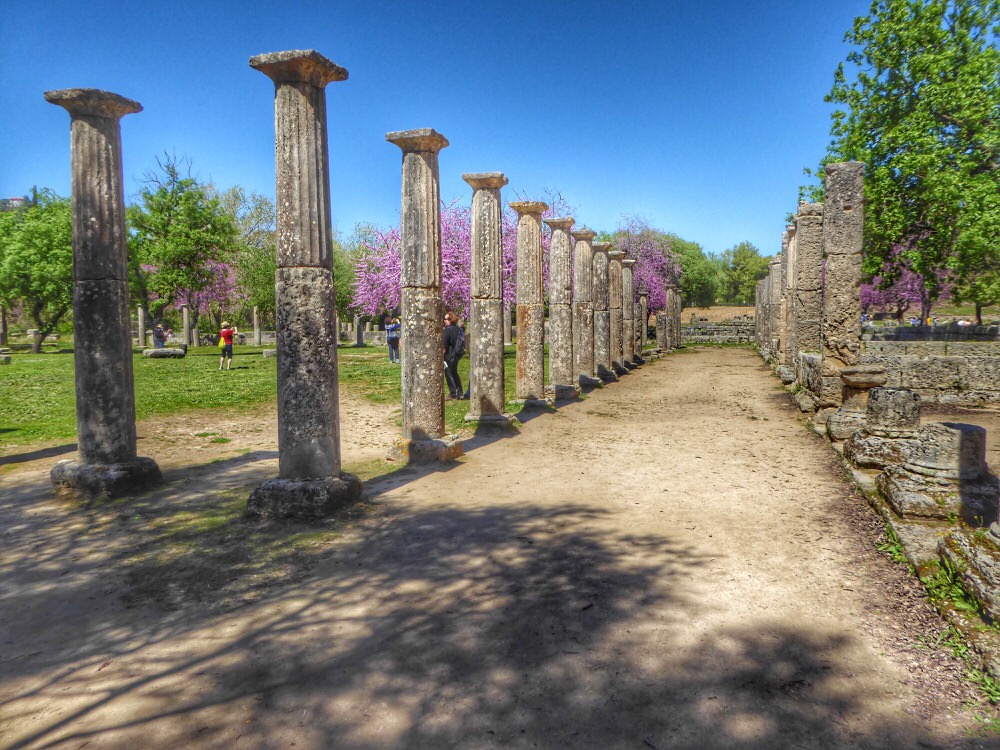
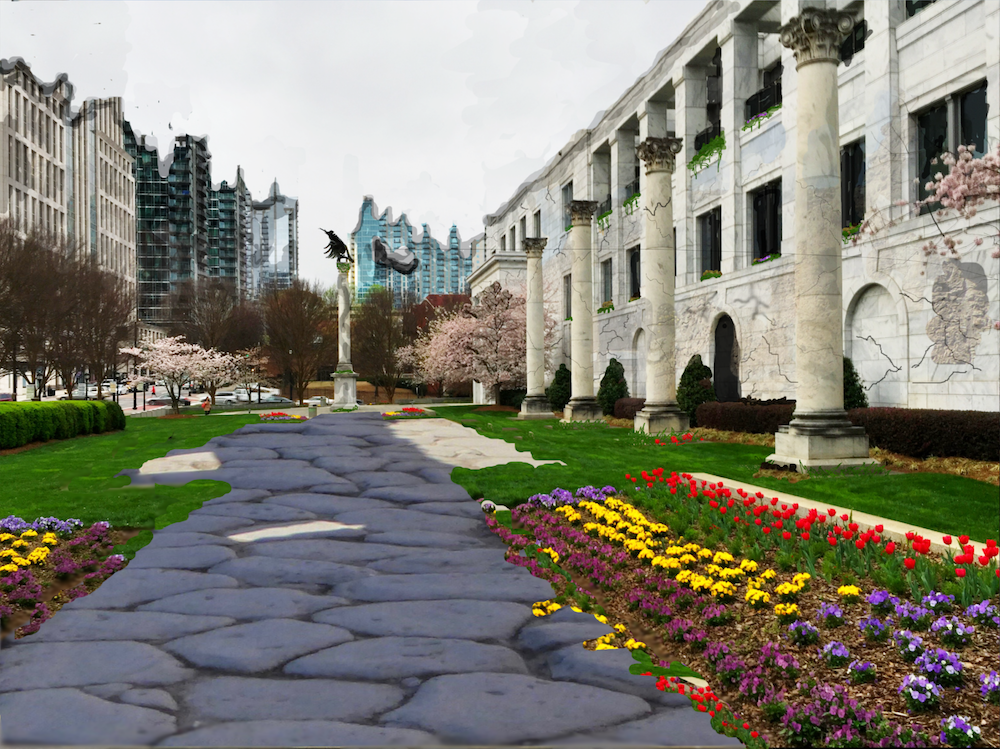
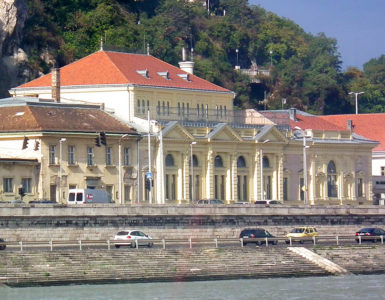
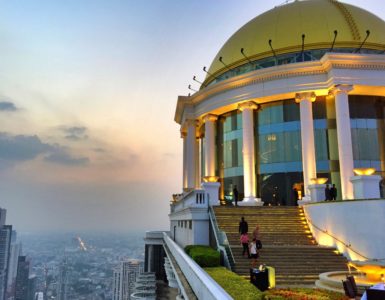

Add comment